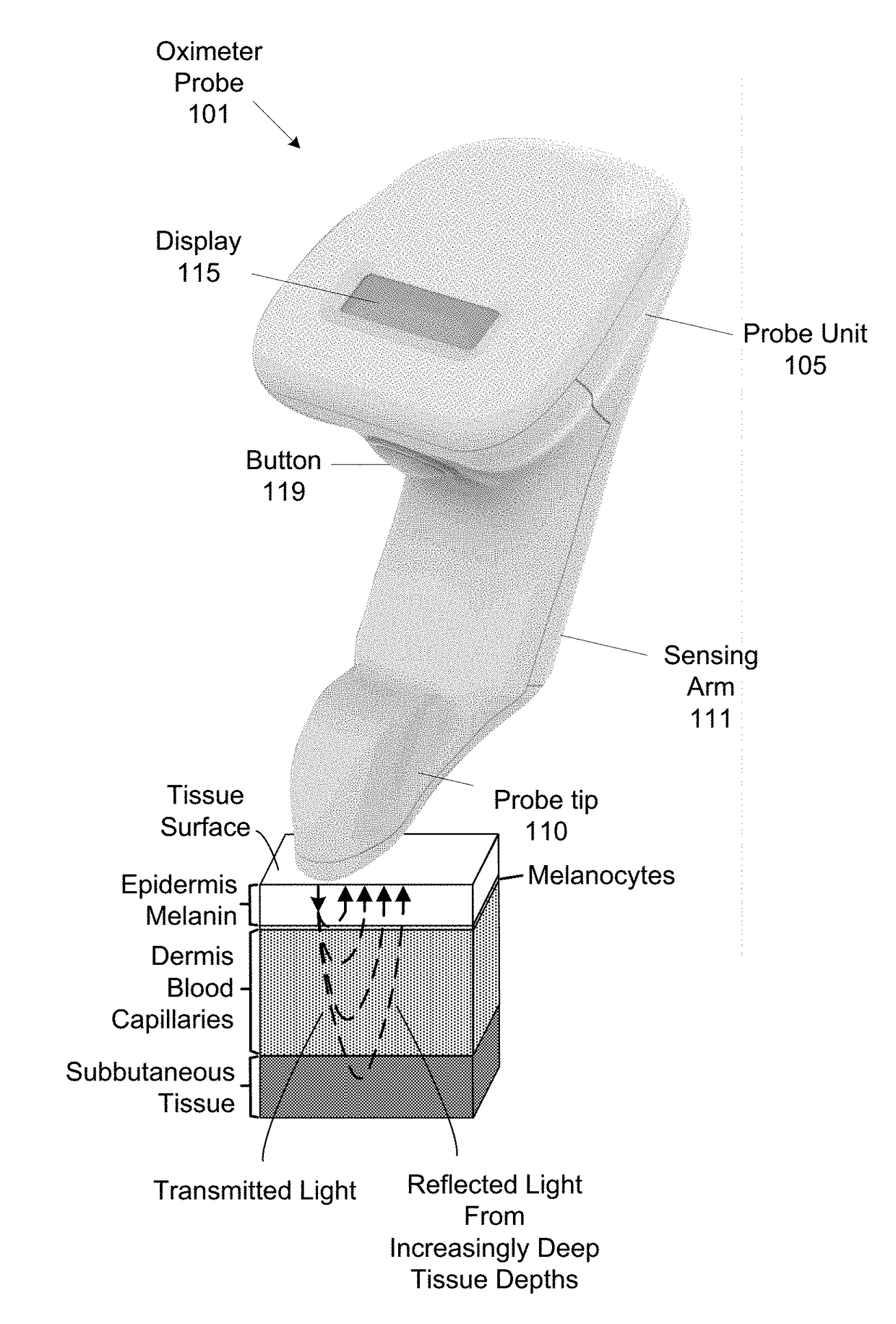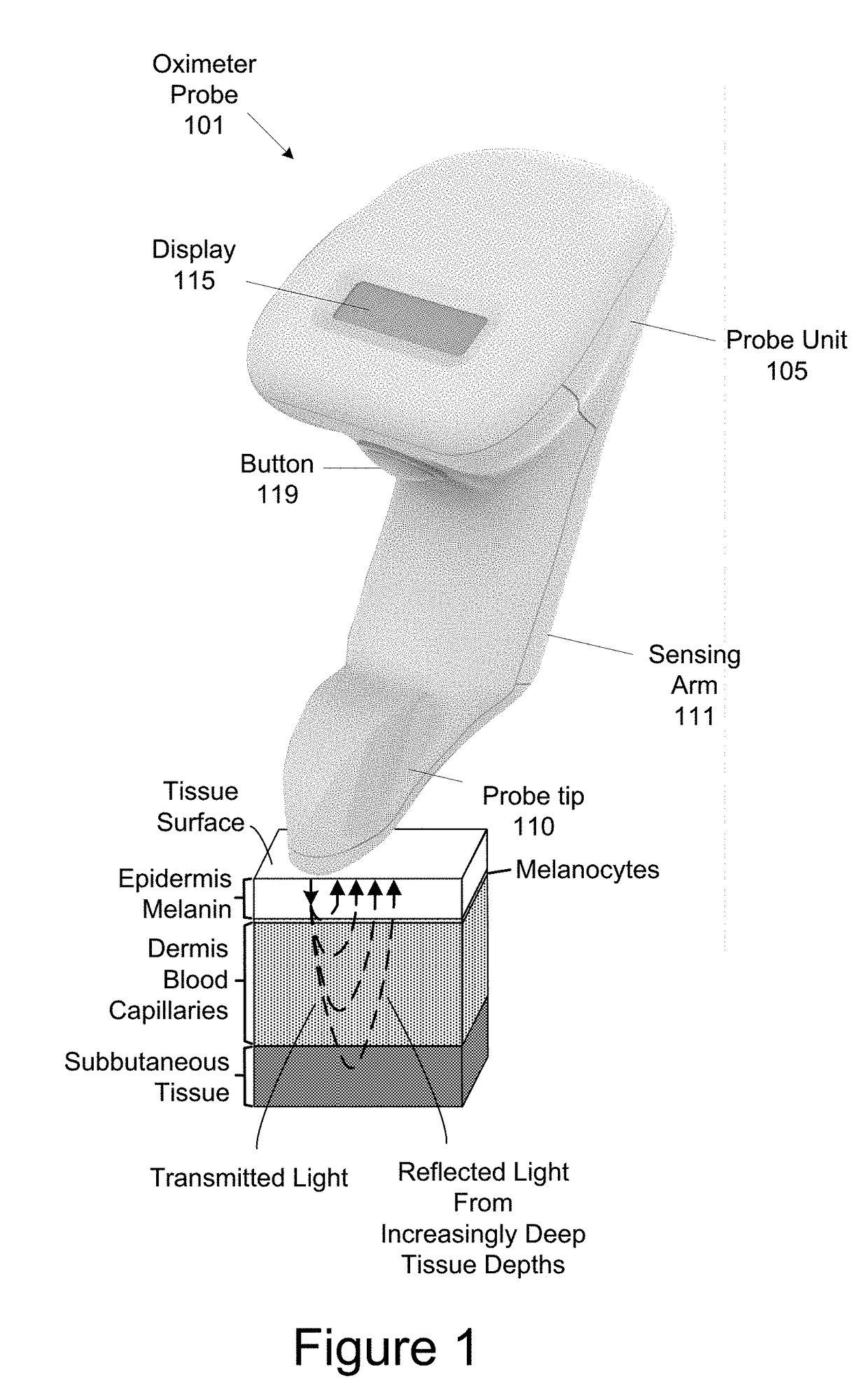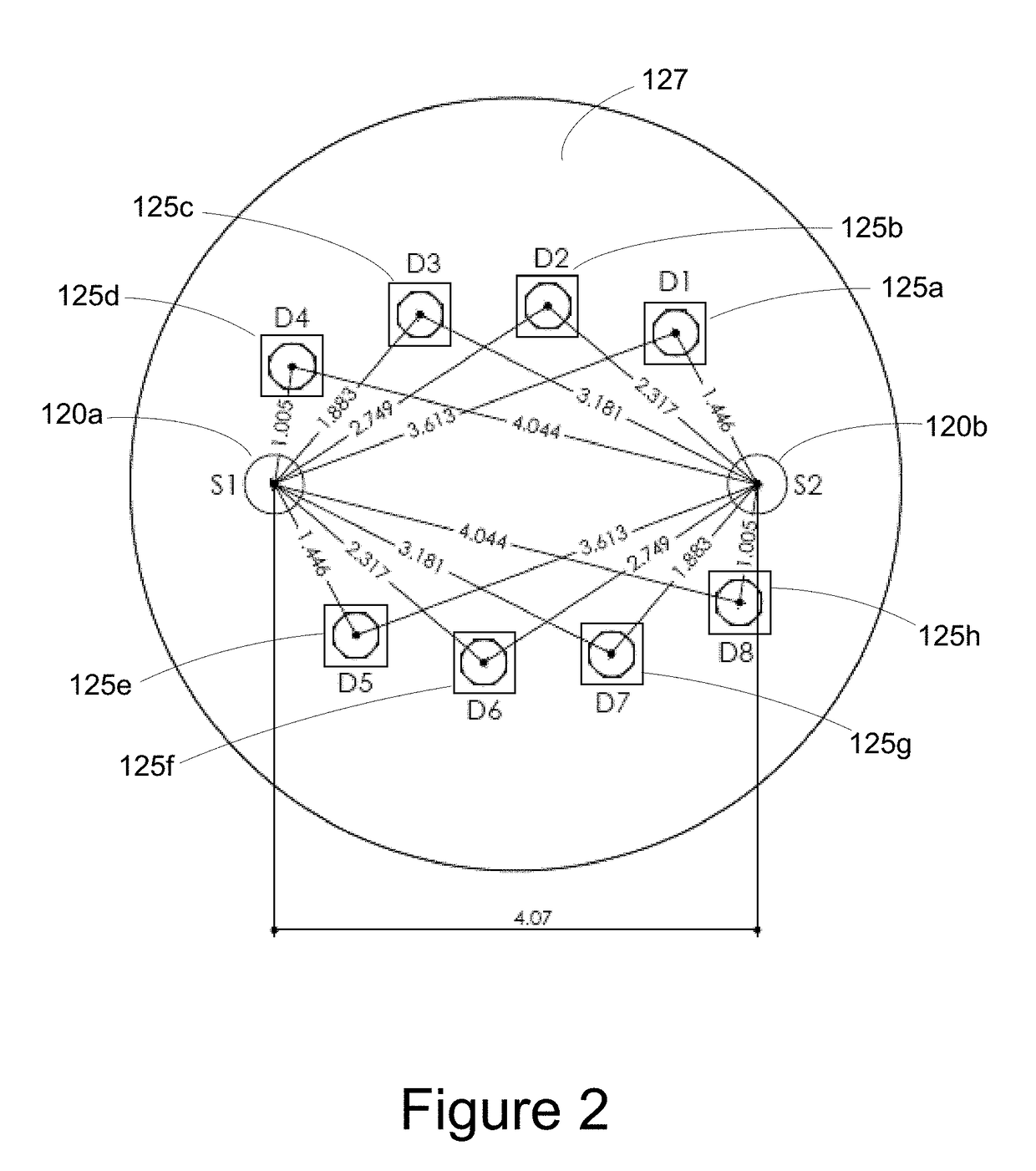Determining Tissue Oxygen Saturation with Melanin Correction
a technology of melanin correction and tissue oxygen saturation, applied in the field of optical probes, can solve problems such as unstable tissue oxygenation state of patients, and achieve the effect of improving accuracy
- Summary
- Abstract
- Description
- Claims
- Application Information
AI Technical Summary
Benefits of technology
Problems solved by technology
Method used
Image
Examples
Embodiment Construction
[0048]FIG. 1 shows an image of an oximeter probe 101 in an implementation. Oximeter probe 101 is configured to make tissue oximetry measurements, such as intraoperatively and postoperatively. Oximeter probe 101 may be a handheld device that includes a probe unit 105, probe tip 110 (also referred to as a sensor head), which may be positioned at an end of a sensing arm 111. Oximeter probe 101 is configured to measure the oxygen saturation of tissue by emitting light, such as near-infrared light, from probe tip 110 into tissue, and collecting light reflected from the tissue at the probe tip.
[0049]Oximeter probe 101 includes a display 115 or other notification device that notifies a user of oxygen saturation measurements made by the oximeter probe. While probe tip 110 is described as being configured for use with oximeter probe 101, which is a handheld device, probe tip 110 may be used with other oximeter probes, such as a modular oximeter probe where the probe tip is at the end of a ca...
PUM
 Login to View More
Login to View More Abstract
Description
Claims
Application Information
 Login to View More
Login to View More - R&D
- Intellectual Property
- Life Sciences
- Materials
- Tech Scout
- Unparalleled Data Quality
- Higher Quality Content
- 60% Fewer Hallucinations
Browse by: Latest US Patents, China's latest patents, Technical Efficacy Thesaurus, Application Domain, Technology Topic, Popular Technical Reports.
© 2025 PatSnap. All rights reserved.Legal|Privacy policy|Modern Slavery Act Transparency Statement|Sitemap|About US| Contact US: help@patsnap.com



